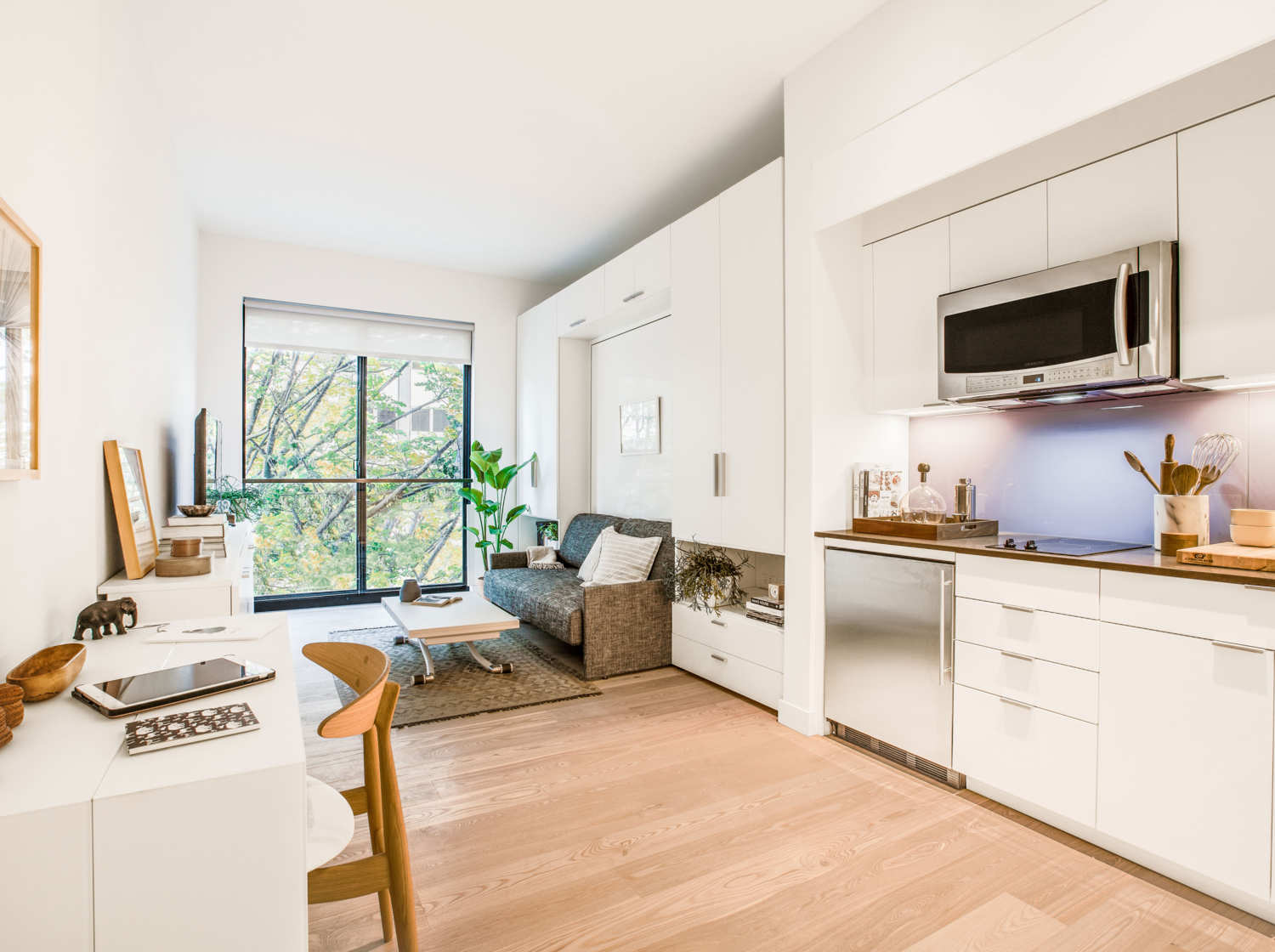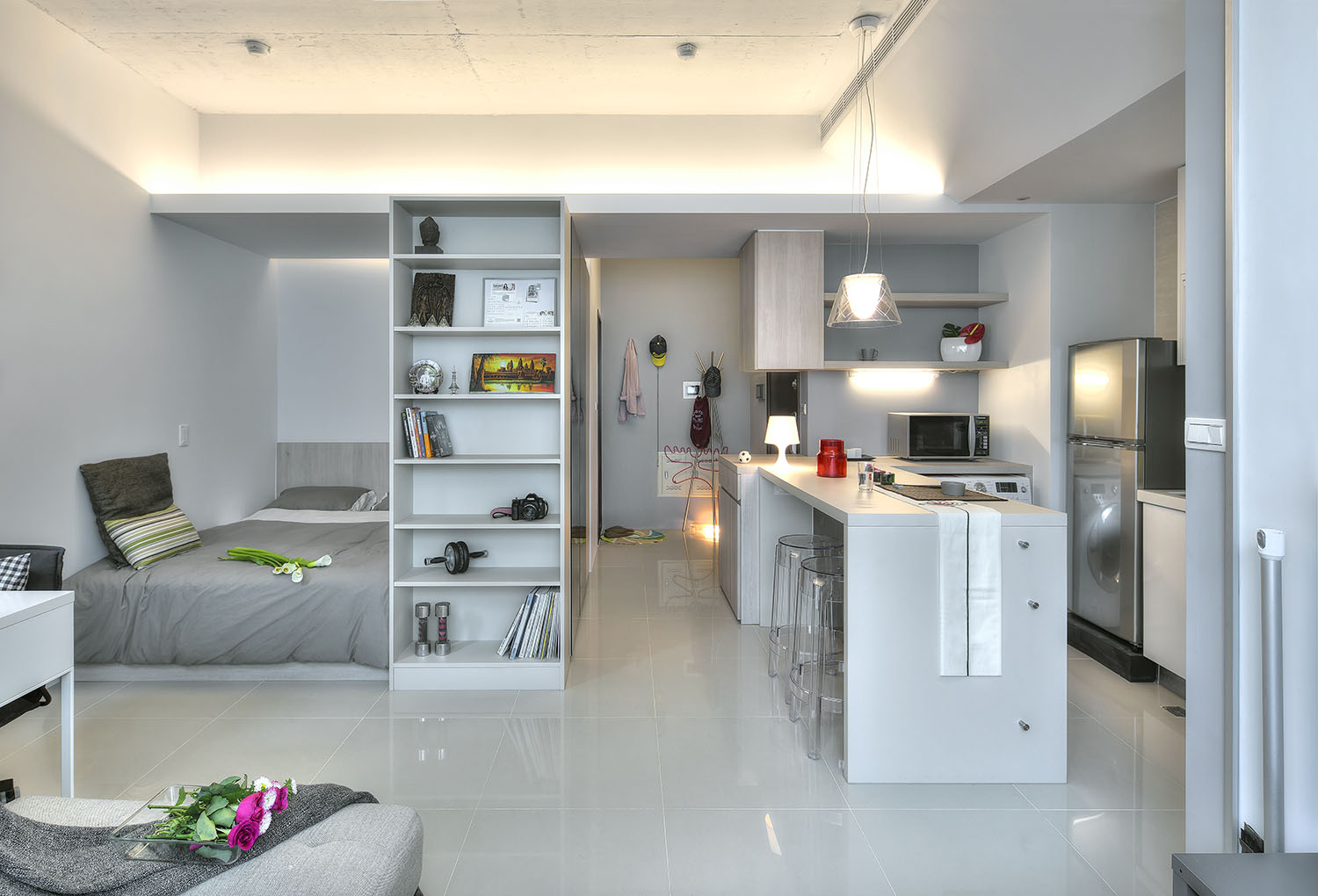The Appeal of Small One-Bedroom Homes

The allure of small one-bedroom homes is on the rise, especially in bustling urban areas. These compact living spaces offer a unique blend of affordability, practicality, and a minimalist lifestyle that resonates with many.
Financial Advantages of Small One-Bedroom Homes
Owning or renting a small one-bedroom home offers significant financial benefits. Smaller homes typically have lower purchase prices or rental costs, reducing the financial burden. This is especially appealing in high-cost urban areas where larger homes are often out of reach for many. Moreover, the reduced space translates to lower utility bills, such as heating, cooling, and electricity. This can lead to substantial savings over time, freeing up funds for other priorities.
Lifestyle Benefits of Minimalism
Small one-bedroom homes encourage a minimalist lifestyle, which can be incredibly liberating. By embracing a simpler way of living, residents often experience a sense of calm and focus. Minimalism emphasizes owning only what is truly needed and letting go of clutter. This can lead to a more organized and stress-free environment.
Creative Design Solutions for Maximizing Space, Small one bedroom homes
Small homes present unique design challenges, but they also offer opportunities for creativity and ingenuity. Space-saving furniture, such as Murphy beds, convertible sofas, and wall-mounted shelves, are essential. Utilizing vertical space with shelves and cabinets is another effective strategy. Mirrors can create the illusion of more space by reflecting light and expanding the visual field. Natural light is crucial in small spaces, so maximizing window exposure and using light-colored paint can brighten the interior.
Design and Functionality in Small One-Bedroom Homes: Small One Bedroom Homes
:max_bytes(150000):strip_icc()/Boutique-hotel-Room-Studio-Apartment-Ideas-587c08153df78c17b6ab82ca.jpg)
Small one-bedroom homes, while compact, can be incredibly functional and stylish when designed with intention. The key lies in maximizing every inch of space and incorporating clever design solutions to create a comfortable and efficient living environment.
Maximizing Functionality and Storage Space
Effective space planning is crucial in small homes. By thoughtfully arranging furniture and incorporating built-in storage solutions, you can create a sense of spaciousness and functionality.
- Open Floor Plan: An open floor plan seamlessly blends the living, dining, and kitchen areas, maximizing space and creating a sense of openness. This eliminates unnecessary walls and allows for flexibility in furniture placement.
- Built-in Storage: Built-in shelves, cabinets, and drawers seamlessly integrate with the walls, maximizing vertical space and minimizing clutter. These solutions provide ample storage without taking up valuable floor space.
- Multi-Purpose Furniture: Utilize furniture that serves multiple purposes, such as a sofa bed, a coffee table with storage, or a dining table that converts into a desk. This optimizes space and adds flexibility to the layout.
- Vertical Storage: Take advantage of vertical space by installing shelves, wall-mounted organizers, and hanging storage solutions. This helps keep items off the floor and creates a clutter-free environment.
Multi-Functional Furniture and Appliances
Multi-functional furniture and appliances are essential for small homes, as they provide versatility and space-saving solutions.
- Murphy Beds: Murphy beds fold away into a wall unit, freeing up floor space during the day. They are a perfect solution for small bedrooms or studio apartments.
- Convertible Sofas: Convertible sofas offer both seating and sleeping options, eliminating the need for a separate bed and maximizing space.
- Combination Appliances: Combination appliances, such as a washer-dryer combo or a refrigerator with a built-in freezer, save space and eliminate the need for separate units.
- Wall-Mounted Televisions: Wall-mounted televisions free up floor space and create a sleek, modern look. They can also be mounted above a fireplace or a piece of furniture to save space.
Creating a Sense of Spaciousness and Light
Creating a sense of spaciousness and light is key to making a small one-bedroom home feel larger and more inviting.
- Light Colors: Use light colors on walls, ceilings, and furniture to reflect light and create a sense of openness. White, cream, and pale blues are excellent choices for small spaces.
- Mirrors: Mirrors strategically placed on walls or furniture can create the illusion of more space by reflecting light and making the room appear larger.
- Natural Light: Maximize natural light by keeping windows uncovered and using sheer curtains or blinds that allow light to filter through. Consider adding a skylight if possible.
- Minimalist Decor: A minimalist approach to decor can help create a sense of spaciousness. Choose furniture with clean lines and simple designs, and avoid excessive clutter.
Efficient Kitchen and Bathroom Layouts
Efficient kitchen and bathroom layouts are essential for maximizing functionality in small spaces.
Efficient Kitchen Layouts
- Galley Kitchen: A galley kitchen features parallel countertops on opposite sides of the room, maximizing space and creating a streamlined layout. This design is ideal for small kitchens with limited space.
- L-Shaped Kitchen: An L-shaped kitchen offers a flexible layout with two countertops meeting at a right angle. This configuration provides ample counter space and storage, making it a popular choice for small homes.
- U-Shaped Kitchen: A U-shaped kitchen features three sides of countertops forming a U-shape. This layout provides ample counter space and storage but may require a larger space than other options.
Efficient Bathroom Layouts
- Shower-Only Bathroom: A shower-only bathroom eliminates the need for a bathtub, freeing up valuable floor space and creating a more streamlined layout. This is an excellent option for small bathrooms.
- Floating Vanities: Floating vanities create a sense of spaciousness by minimizing visual bulk. They also provide extra storage space beneath the sink.
- Corner Shower: A corner shower utilizes a small space efficiently by fitting into a corner of the bathroom. This layout maximizes floor space and creates a more open feel.
Finding and Buying a Small One-Bedroom Home

Embarking on the journey of finding and purchasing a small one-bedroom home requires careful consideration and strategic planning. You’ll need to navigate a multifaceted landscape, from identifying your ideal location and budget to understanding the nuances of different property types and negotiating the best possible terms.
Factors to Consider When Searching
Before embarking on your search, it’s crucial to establish a clear understanding of your needs and priorities. This involves a comprehensive assessment of your lifestyle, budget, and desired location.
- Location: Consider factors such as proximity to work, amenities, public transportation, and your preferred neighborhood atmosphere. Think about your daily commute, access to grocery stores, restaurants, parks, and cultural attractions.
- Budget: Establish a realistic budget, including the purchase price, closing costs, and potential ongoing expenses such as property taxes, insurance, and maintenance. Factor in mortgage payments, down payment requirements, and any other financial obligations.
- Lifestyle: Evaluate your lifestyle and determine the space you truly need. Consider your daily routines, entertaining habits, and whether you require dedicated workspaces or storage areas. A small home may be ideal for individuals or couples who value minimalism and a sense of community, while others may prefer larger spaces for a more expansive lifestyle.
- Property Type: Explore the different types of small homes available, such as studios, lofts, and townhouses. Each type offers distinct advantages and disadvantages, and your choice should align with your preferences and priorities.
Types of Small Homes
Understanding the different types of small homes available is essential for making an informed decision. Each type offers unique characteristics and appeals to different preferences and lifestyles.
- Studios: Studios are compact and typically offer a single room that serves as a living, sleeping, and dining area. They are often favored for their affordability and simplicity, especially for individuals or couples who prioritize minimalism and a streamlined lifestyle. However, they may lack privacy and dedicated spaces for specific activities.
- Lofts: Lofts are typically found in converted industrial buildings and feature high ceilings, open floor plans, and large windows that flood the space with natural light. They often offer a sense of spaciousness and modern design, but may require creative solutions for maximizing storage and defining distinct living areas. The industrial aesthetic may not appeal to all, and the open layout can sometimes lead to noise and lack of privacy.
- Townhouses: Townhouses offer a balance between the privacy of a single-family home and the affordability and convenience of a condo. They typically have multiple levels, including bedrooms, bathrooms, and living areas, and may offer private outdoor spaces such as patios or balconies. However, townhouses may have shared walls with neighbors, which can lead to noise concerns. They may also have homeowner association fees, which can add to the overall cost of ownership.
Negotiating the Best Price and Terms
Negotiating the best price and terms for your small home is crucial to securing a favorable deal. This involves understanding the market conditions, conducting thorough research, and leveraging your negotiating skills.
- Market Research: Before making an offer, thoroughly research the market value of similar properties in the area. Utilize online resources, real estate agents, and local appraisers to gather data and establish a fair asking price. Consider factors such as recent sales, property condition, and neighborhood trends.
- Offer Preparation: Prepare a strong offer that reflects your budget and the market conditions. Consider including contingencies such as a home inspection and financing approval. Be prepared to justify your offer and demonstrate your commitment to purchasing the property.
- Negotiation Strategies: Engage in open and respectful negotiations with the seller. Be prepared to compromise and find common ground. Consider offering a lower price, requesting concessions, or negotiating closing costs. Remember, the goal is to reach an agreement that is mutually beneficial.
Resources for Finding Small Homes
Several resources can help you find small homes for sale or rent. These resources offer a wide range of options and tools to assist you in your search.
- Real Estate Websites: Websites such as Zillow, Redfin, and Realtor.com provide comprehensive listings of homes for sale and rent. They offer search filters, virtual tours, and access to real estate agents.
- Real Estate Agents: Working with a real estate agent can provide valuable insights and guidance throughout the home-buying process. Agents can help you identify properties that meet your criteria, negotiate on your behalf, and navigate the legal and financial aspects of the transaction.
- Local Publications: Local newspapers, magazines, and online publications often feature listings of small homes for sale or rent. These resources can provide insights into the local market and identify properties that may not be listed on national websites.
- Community Forums: Online forums and social media groups dedicated to home buying and real estate can provide valuable tips, advice, and networking opportunities. Connect with other homebuyers, share experiences, and access local knowledge.
Small one bedroom homes – Small one-bedroom homes often feel like a solitary island, a quiet space where dreams are nurtured and anxieties are wrestled. A touch of color can break the monotony, a splash of personality in a confined space. For a touch of calming sophistication, consider a navy blue bedroom rug – a subtle reminder of the vastness of the ocean, a symbol of quiet strength in the face of solitude.
The rug anchors the space, grounding the small room in a sense of calm and composure, making it feel more like a sanctuary than a mere bedroom.
Small one-bedroom homes often feel confined, but a touch of color can make a world of difference. A deep, calming shade like royal blue bedroom wallpaper can create an illusion of space, drawing the eye upward and making the room feel less cramped.
It’s a reminder that even in the smallest of spaces, a little creativity can transform a house into a home.
